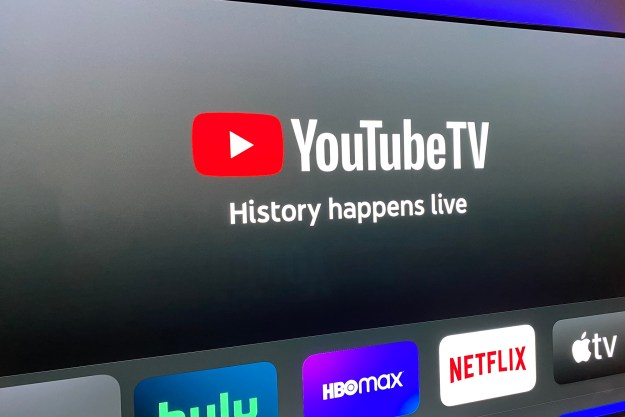Home theater done right improves the quality of life. Home theater done wrong makes you wish you’d never been born. Would you rather entertain loved ones or just look like an idiot in front of them? The choice, really, is yours. You may have the big picture and sweet sound of your dreams—or you may blow your investment in any of the following ways:
Top 5 Audio Mistakes
Bigger Is Better: Once again, not necessarily so. Satellite-and-subwoofer packages have improved enormously and a good one (mid three figures and up) is often the best choice for a midsized or smaller room. A bigger enclosure might support deeper bass response, but now that most home theater systems depend on subwoofers, manufacturers will often trade off bass response for efficiency. The result might be a floorstanding speaker with little more deep bass than a bookshelf-size speaker—and if that’s the case, there’s no point buying anything larger. And guess what? That may not be a bad thing if your system is powered by a receiver. Unless you’re running a giant muscle amp with a separate preamp, it’s best to set the surround processor to run all speakers “small” and route bass to the sub. Plan your speaker purchases accordingly. Instead of worrying about size and bass response, look at sensitivity and efficiency—the higher these ratings are, the louder your system will play. When you’ve got one power supply huffing and puffing to power five to seven speakers, extra headroom is never a bad thing.
Believe the Big Lie—100 Watts Per Channel! Isn’t it amazing how many receivers have a specified power rating of 100 watts per channel? It’s never 99 or 101, always 100. Unless you measure the thing, as some of the better magazines do—then you discover that it’s really more like 35 watts per channel. The actual power going to the speakers rises to 100 watts only if the manufacturer just runs one or two speakers at a time, or eliminates the deep-bass response, or specifies a lower impedance—or just flat-out lies about it. One manufacturer recently boasted that its seven-channel receivers deliver 75 percent of rated power into five speakers. By the industry’s low standards, that’s actually stellar performance. Receivers that can really run full-range speakers, with adequate bass response, start at the $1500 mark (and even then, don’t expect miracles). Again, if you want your system to play loud and clear with a real-world receiver, watch the sensitivity/efficiency ratings on your speakers.
7.1 Is Better than 5.1: Wrong, wrong, wrong! Mucking around with the 5.1-channel surround standard is a cynical ploy from a desperate audio industry. OK, sales of component audio products are down, but that’s no excuse for convincing consumers to junk up their rooms with unnecessary back-surrounds. The standard in multi-channel music reproduction—for SACD and DVD-Audio—is still 5.1 channels. Only a minority of big-budget DVD movie releases support Dolby Digital EX and DTS, the 6.1-/7.1-channel cinema standards. Even if you aspire to high-end home theater, 5.1 channels are sufficient except in the most cavernous rooms. If you really want to go beyond that, make it 5.2—most systems would benefit from having a second sub because it provides much more even bass response throughout the room.
If Flat TVs Are Good, Flat Speakers Are Just As Good: Not really. Speakers that hang alongside an LCD or plasma TV are both an up-and-coming category and a tempting proposition. Unfortunately, the laws of acoustics are against them. All speakers interact with the room, including the walls behind them. The closer to the wall the speaker gets, the higher and more intrusive the dominant frequency of the interaction becomes. That’s why audiophiles always tell you to pull your speakers away from the wall. However, there is a catch—that intrusive acoustic interaction practically disappears when the speaker becomes part of the wall. In other words, while on-wall speakers rarely sound great, in-wall speakers have the potential to sound very good indeed. But don’t go cutting holes in your walls—leave the job of positioning your in-walls to a qualified custom installer.
If Your System Sounds Bad, Your Equipment Is Bad: Wait, there’s hope. The problem may lie in the way the system interacts with the room. Some rooms sound boomy because their proportions maximize humpy bass waves that bounce from wall to wall, a problem known as “standing waves.” Such rooms have a resonant frequency, a loud bass note of their own. Reducing the sub volume and avoiding corner placement will minimize the problem but only an equalized sub (like the Infinity RABOS) or receiver (like various models from Yamaha, Pioneer, or Denon) will solve it. If you hear a “slap echo” when you clap your hands, cover the floor between speakers and seating with a thick and padded rug. Use absorptive or diffusive objects like shelving to treat side-wall reflections—you needn’t cover the whole wall, just the small area of first reflection. Media pack rats who line their home theaters with shelving may have the acoustic advantage over less-is-more minimalists. Tweak your room and unlock your system’s hidden potential!
Click here to read the Top 5 Home Video Mistakes.
Editors' Recommendations
- Save $200 on this Epson 4K home theater projector at Best Buy
- What is spatial audio? The 3D sound experience fully explained
- Best AV receivers 2024: top sound for your home theater
- Got a PS5? Here’s how to get 6 free months of Apple Music
- Apple has upgraded the AirPods Pro with lossless audio, sort of



